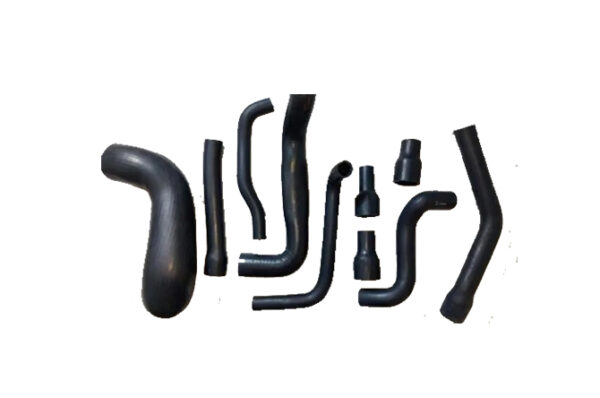The automotive industry relies heavily on specialized components to ensure safety, durability, and performance. Among these components, gaskets, silicone profiles, and EPDM profiles play crucial roles in sealing, insulation, and protection. Here’s a closer look at each:
Gaskets in the Automotive Industry
What Are Gaskets?
Gaskets are mechanical seals that fill the space between two surfaces, preventing the leakage of fluids or gases under compression. They are critical for maintaining the efficiency and safety of various automotive systems.
Applications
- Engine Systems: Gaskets are used in cylinder heads, exhaust manifolds, and oil pans to seal components and prevent leaks.
- Transmission Systems: They ensure fluid retention in gearboxes and prevent contamination.
- HVAC Systems: Gaskets help seal air conditioning units, ensuring proper airflow and thermal insulation.
Materials
- Metal: Steel, copper, or aluminum for high-temperature and high-pressure systems like engines.
- Rubber: For flexibility and sealing in areas with moderate temperatures.
- Composite Materials: A blend of rubber, metal, and fibers for specialized applications.
Key Benefits
- Prevents leaks and contamination.
- Enhances system efficiency and longevity.
- Reduces noise, vibration, and harshness (NVH).
Silicone Profiles in the Automotive Industry
What Are Silicone Profiles?
Silicone profiles are extruded components made from silicone rubber, known for their flexibility, heat resistance, and durability.
Applications
- Door Seals: Provide an airtight seal to prevent water, dust, and air ingress.
- Window Seals: Ensure insulation and prevent rattle.
- Lighting Systems: Used as seals around headlights and taillights to prevent moisture.
- Under-the-Hood Components: Silicone profiles withstand high temperatures and are used in areas like turbochargers or air intake systems.
Advantages of Silicone
- Temperature Resistance: Performs well in extreme temperatures (-60°C to 200°C).
- UV and Ozone Resistance: Ideal for outdoor applications.
- Durability: Resistant to wear, tear, and aging.
- Flexibility: Remains elastic even in harsh conditions.
EPDM Profiles in the Automotive Industry
What Is EPDM?
EPDM (Ethylene Propylene Diene Monomer) is a synthetic rubber widely used in automotive applications for its excellent weather resistance and flexibility.
Applications
- Weatherstripping: Found in door seals, trunk seals, and window seals to prevent water and air infiltration.
- Hood Seals: Protect engine components from water and debris.
- Body Seals: Ensures quiet cabin interiors by reducing NVH.
- Fuel Systems: EPDM is resistant to chemicals and used in seals and hoses for fuel and coolant systems.
Key Properties
- Weather Resistance: Exceptional resistance to UV rays, ozone, and oxidation.
- Flexibility: Retains elasticity over a wide temperature range (-50°C to 150°C).
- Chemical Resistance: Withstands exposure to various automotive fluids.
- Low Compression Set: Maintains sealing ability over time without permanent deformation.
Comparison: Silicone Profiles vs. EPDM Profiles
| Feature | Silicone Profiles | EPDM Profiles |
|---|---|---|
| Temperature Resistance | Higher (-60°C to 200°C) | Moderate (-50°C to 150°C) |
| UV and Ozone Resistance | Excellent | Excellent |
| Flexibility | Superior, even in extreme cold | Good |
| Cost | Higher due to premium material | Lower |
| Applications | High-temperature areas, lighting | Weatherstripping, seals |
Conclusion
In the automotive industry, gaskets, silicone profiles, and EPDM profiles are indispensable for ensuring the integrity, performance, and safety of vehicles. While gaskets handle critical sealing tasks in engines and transmissions, silicone and EPDM profiles dominate weatherproofing, thermal insulation, and vibration reduction.
Advances in material technology continue to enhance these components, allowing automakers to meet stringent safety and environmental standards while ensuring a comfortable driving experience. If you’re exploring automotive solutions, understanding these components is essential for optimized performance and reliability.




